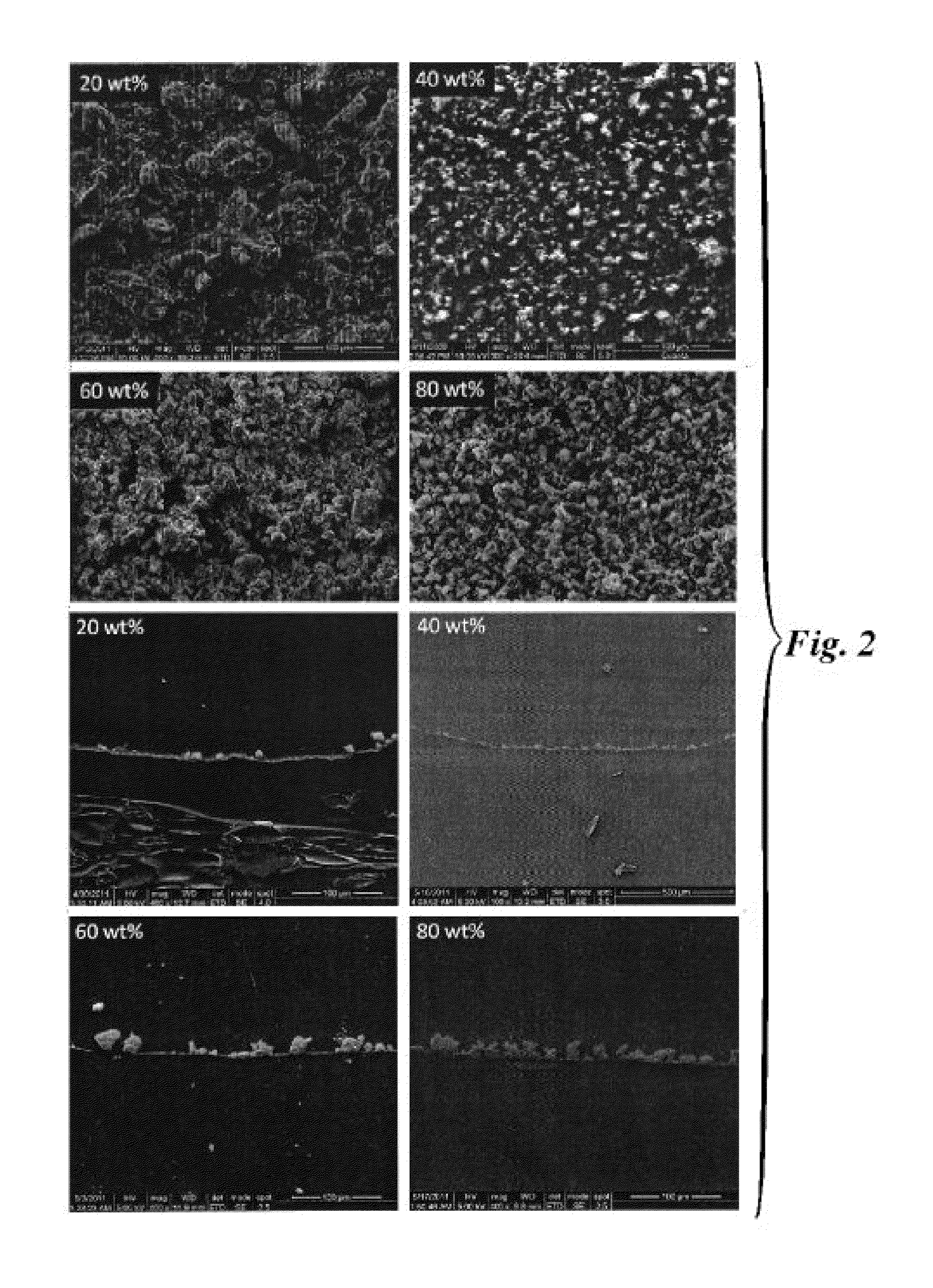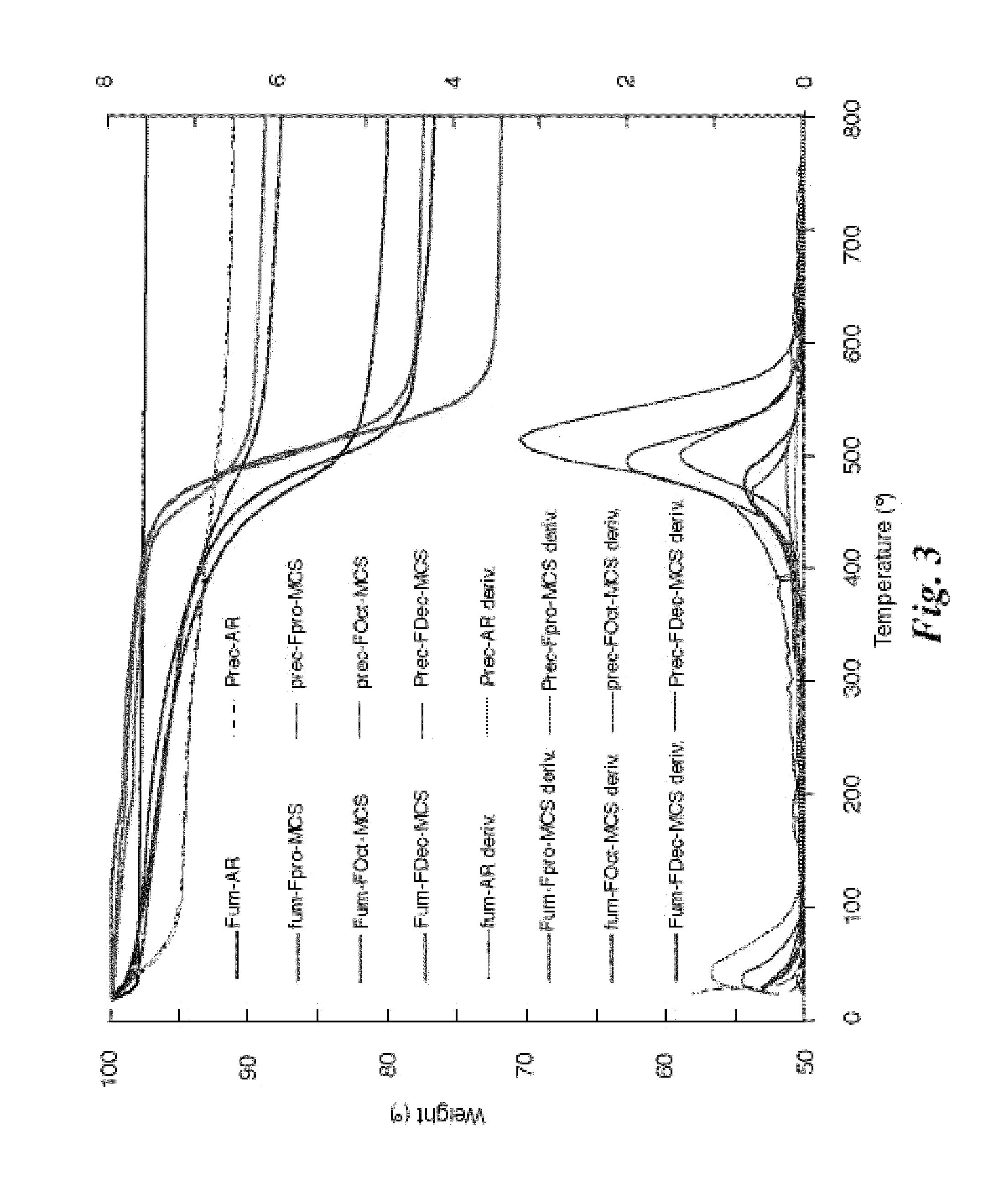Sprayed on superoleophobic surface formulations
a technology of superoleophobic surface and formulation, applied in the direction of cellulosic plastic layered products, natural mineral layered products, separation processes, etc., can solve the problems of droplets falling off, difficult to remove, no common accepted precise definition, etc., and achieve low viscosity, low surface energy, and low surface energy
- Summary
- Abstract
- Description
- Claims
- Application Information
AI Technical Summary
Benefits of technology
Problems solved by technology
Method used
Image
Examples
example 1
[0031]Hi-Sil 233, a precipitated silica with a primary solid particle diameter of 22 nm and a specific surface area (as determined by the BET nitrogen adsorption profile) of approximately 125 m2 / g, was purchased from PPG Industries. Heptadecafluoro-1,1,2,2-tetrahydrodecyl)dimethylchlorosilane (FDec-MCS) was purchased from Gelest, Inc. and used as received without further purification. Anhydrous dimethylamine was purchased from Aldrich. Chloroform was purchased from Aldrich and passed through an activated alumina column to remove water. Deionized water was further purified using a Millipore system.
[0032]The surface functionalization of silica particles was performed using various Schlenk line techniques, taking great care to minimize moisture exposure. Hi-Sil 233, typically on a 2 g scale, was initially dried by heating overnight at 200° C. under dynamic vacuum. The dried silica was allowed to cool to room temperature under vacuum before one atmosphere of dimethylamine gas was introd...
example 2
[0036]FIG. 2 shows top-down and cross-sectional SEM images obtained of the samples prepared according to the description given in Example 1. The images showed a gradual change in the morphology of the coating, from smoothed aggregates coated in fluoroelastomer at 20% to aggregates partially coated at 40% to rough aggregates cemented together by binder at 60% and 80%. The gradual changes in topology formed the basis for the gradual change in the degree of superoleophobocity observed for the coatings.
example 3
[0037]FIG. 3 shows a thermogravimetric analysis of treated fumed (Aerosil 380) silica and precipitated silica (Hi-Sil 233) as modified by the FDec-MCS as described in Example 1. The Hi-Sil 233 sample in particular showed negligible weight loss below 200° C.; thus, the thermal stability of the treated Hi-Sil 233 particles was found to be as great or greater than that of the Viton Extreme fluoroelastomer (10,000 hours at 200° C. according to the manufacturer's data sheet). As a result, the coating could be expected to withstand thousands of hours of exposure at temperatures as high as 200° C., significantly exceeding the maximum use temperatures of all previously reported sprayed-on superoleophobic coatings.
PUM
| Property | Measurement | Unit |
|---|---|---|
| Temperature | aaaaa | aaaaa |
| Temperature | aaaaa | aaaaa |
| Temperature | aaaaa | aaaaa |
Abstract
Description
Claims
Application Information
 Login to View More
Login to View More - R&D
- Intellectual Property
- Life Sciences
- Materials
- Tech Scout
- Unparalleled Data Quality
- Higher Quality Content
- 60% Fewer Hallucinations
Browse by: Latest US Patents, China's latest patents, Technical Efficacy Thesaurus, Application Domain, Technology Topic, Popular Technical Reports.
© 2025 PatSnap. All rights reserved.Legal|Privacy policy|Modern Slavery Act Transparency Statement|Sitemap|About US| Contact US: help@patsnap.com



